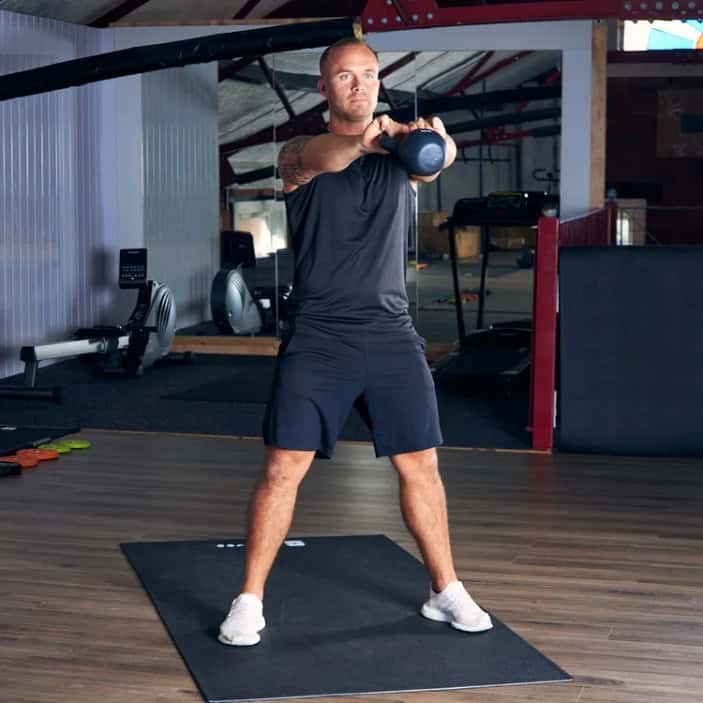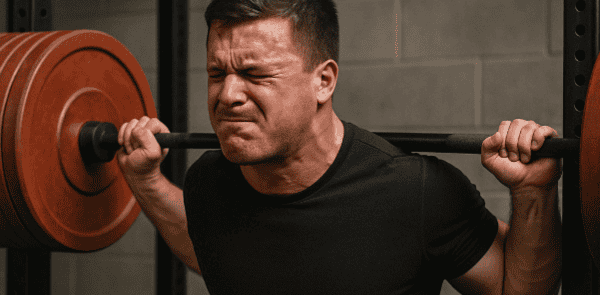You want to get stronger, look better, or feel more capable in the gym. But then the big question hits: heavier weights vs. higher reps. This guide explains what each approach does to help you work smarter, not harder.
Disclaimer: This is information, not advice. Consult a professional before changing your training or if you have health concerns.
Heavier Weights vs Higher Reps – What’s the Difference?
What sets heavier weights and higher reps (a.k.a. repetitions) apart is how your muscles are worked. For now, we’ll skip the science of how it works and go straight to the impact it has:
With heavier weights, you use a larger load but perform fewer repetitions. This pushes your muscles to generate maximum force, which helps build raw strength.
Higher reps involve lighter weights but more repetitions. This keeps your muscles working longer, which improves endurance. It can also contribute to size if the total effort is high enough.
Research shows that heavy loads tend to optimise maximal strength. Meanwhile, lighter loads with more reps are better for local muscular endurance. The NHS also highlights that both can increase muscle strength and size.
What Each Approach Does
Here’s how each training style affects your muscles, strength, and endurance.
Heavier weights, fewer reps

Lifting heavier weights challenges your muscles and nervous system to work harder. That effort helps you get stronger (i.e. able to lift heavier) over time. If your goal is brute strength, a common routine is 3 sets of 3 to 5 repetitions.
Bodybuilders and powerlifters often train this way to hit peak strength. Keep in mind, though, that you don’t need to go that extreme. Even adding some heavier lifts to your usual routine can help.
WARNING: When lifting a very heavy weight, you’ll probably find that your heart starts to beat very fast. Increased blood pressure is a known trend among powerlifters, so if you already have high blood pressure, be careful about taking on this training approach.
Lighter weights, higher reps

(PhysioRoom Kettlebell 4kg – 20kg)
Using lighter weights helps your muscles train for longer sets. It builds endurance and takes some pressure off your joints and heart. This makes it suitable if you’re managing an injury or arthritis.
A study also shows you can still grow muscle this way if you train close to your limit (failure). For instance, try dumbbell bicep curls with a weight you can lift about 15 to 20 times. Perform each set until you can’t complete another rep, rest around a minute, then go again.
Bodyweight or light-dumbbell squats can follow the same idea, aiming for 20 to 25 reps. Even modified push-ups can be done until the last rep feels tough.
You can also train for time rather than reps. High-rep lifting makes a great cardio workout, especially if you keep going for 30-60 seconds.
Note: Challenge yourself, but don’t push through pain and always pay attention to how your body feels.
Which Is Right for You?
If your goal is to increase the maximum weight you can lift, heavier weights with fewer reps will get you there. You don’t need to train like a pro. Even adding a few heavier lifts each week can make chores or carrying groceries easier over time.
Want to build up your muscle endurance and/or size, without putting lots of pressure on your joints? Going for lighter weights with more reps can help with that. It also lets you pay more attention to your form and control each movement. You still get a solid workout, just without overloading your body.
You also don’t have to stick to one style. Mix heavier lifts with higher-rep sets for balanced strength, stamina, and muscle growth. Over time, you’ll find what fits your routine and what feels best for your body.
Safety Considerations & When to Be Cautious
Always adjust your training to where you are right now—your fitness, any injuries, and how your body feels. One-size-fits-all advice doesn’t work here.
Form also matters more than the numbers. Even a few heavy reps can cause problems if your technique slips, so focus on moving right, not just lifting more. New to lifting? Stick to moderate weights to learn the movements, then slowly increase the load or reps.
If you’re recovering from an injury or want extra support to keep your back in proper form when lifting heavy, wear this weight lifting belt to keep your core stable. Weightlifting gloves also help in easing your grip pressure. They won’t replace proper form, but they can make training safer and more comfortable. And then there are weighlifting straps, which are excellent for continuing to lift heavy weights even when your hands are too tired to keep gripping.
Give yourself time to recover. Pushing too hard too soon can leave you stiff, sore, or even risk injury. Listen to your body and adjust as you go. Take extra rest, cut back on weight, or shorten the session as needed.
Round-up
How you mix heavier lifts and higher reps comes down to what feels right for you. Some days you might feel up for lifting more, other days doing more reps works better. Try both over time, and you’ll see what your body can handle.


